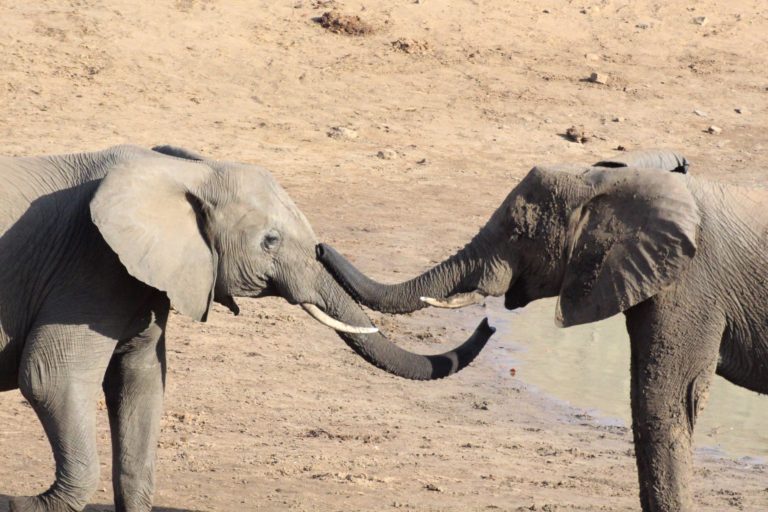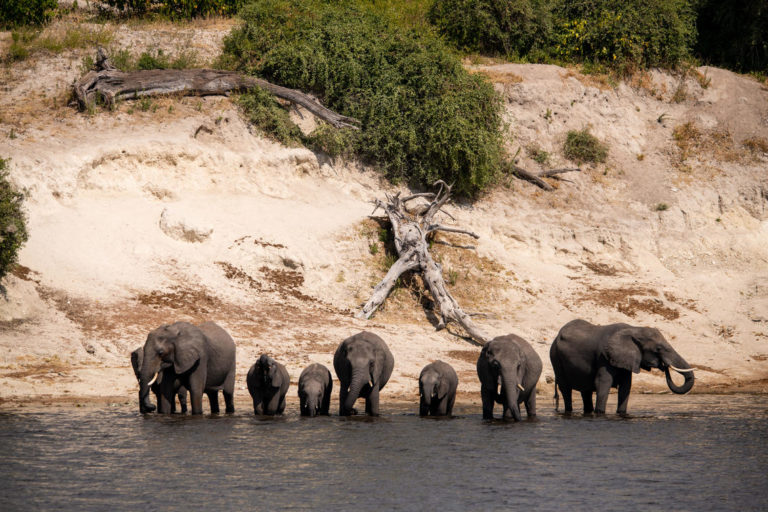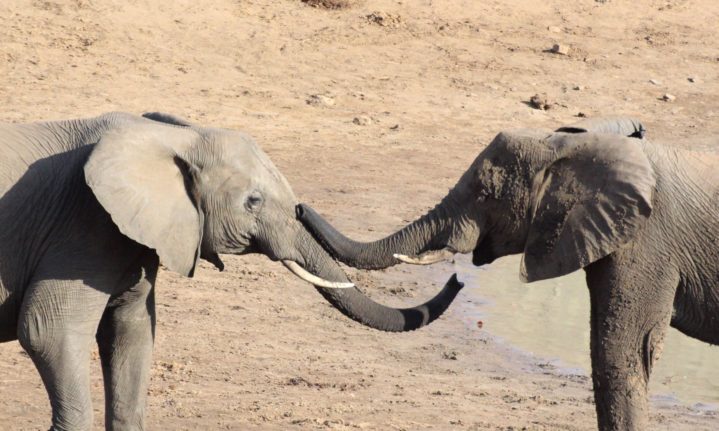New research from Stellenbosch University’s Department for Conservation Ecology has revealed that elephants have a ‘group odour’ among herd members, which contains messages about age, gender and individual identity.
Their sense of smell is so finely attuned that they are able to recognise ‘herd membership,’ and can even differentiate between generations of the same human family.
According to the new research, elephants share a so-called ‘herd odour’ when going about their ritualised greeting ceremonies.
Written by Engela Duvenage

Picture: Engela Duvenage
The African giants also have the uncanny ability to track humans. These are some of the findings from research conducted by Stellenbosch University (SU) elephant expert Dr Katharina von Dürckheim.
Elephants’ sense of smell

Among the many adventures that Dr Katharina von Dürckheim, leader of the Wildlife Free to Roam Project, was part of a translocation project of wild African elephants in Malawi.
‘Elephants leave urine and dung behind on these pathways. These are like communication hubs. They contain olfactory messages that allow them to monitor which other elephants are around and are possibly ready to mate,’ says von Dürckheim.
‘When there’s a spot of urine on the ground, an elephant first blows onto the sandy spot to create a sort of dust storm of particles. It will inhale deeply through the trunk, sometimes transferring particles to the Jacobsons’ organ through the roof of the mouth, in what we call a flehmen response.’
It was the highly ritualised way that African elephants greet each other – something she had often had the privilege of observing during elephant interactions at waterholes in various national parks – that attracted her to the topic.
‘African elephants have this fascinating, ritualised greeting ceremony when they get together. No matter how often we’d work with the tame elephants, they’d still always do it too. They’d urinate, defecate, secrete from their temporal glands near their eyes, rumble, trumpet, spin their bodies around and fan their ears to waft something that I call ‘pachyderm perfume’ around.’
Such behaviour, common to pachyderms such as elephants, rhinos and hippos, is something that reminds Von Dürckheim of how butterflies and moths fan their wings to spread pheromones.
Chemical messages
Von Dürckheim started asking herself: ‘What message is contained in these chemical messages that elephants secrete every single time? There must be some function here.’
Given her subject matter, her research was truly a mammoth task. Over the course of many years of study, she was able to do some ground-breaking research. Hers was the first study to deep dive into the chemistry behind secretions from the genitals and buccal and temporal glands of free-ranging African elephant females. The latter causes the typical ‘teary eyes’ of an African elephant female – something that is seldom seen in Asian elephant females.
Her research shows that African elephants can discern between unfamiliar and familiar members of their species from both urine and dung. They can also identify individual elephants based on what they pick up on from the ‘smell’ released from the temporal gland, buccal and genital secretions.
Genetics not the key

Picture: Getaway Gallery
In this, genetics – or whether an animal is related to another or not – does not seem to play a role. This was shown through her work on the so-called odour-gene covariance, or OGC. This topic has been explored in many other animals but von Dürckheim was the first to tackle this in elephants.
‘To study OGC, you examine blood and DNA, and you analyse the body chemistry of related and unrelated animals. You see whether because of genetic closeness, related animals have a more similar chemical profile to each other than to unrelated animals.’
While related elephants did share many chemical compounds, she found that these varied in intensity and identity.
Her research revealed the existence of individual identity odour profiles in African elephants, as well as a signature for age encoded in their temporal gland and buccal secretions.
Von Dürckheim was specifically interested in whether there is something like a tell-tale ‘herd odour’ or ‘group odour’, given the social life of elephants, and their ability to recognise relatives. She could not find a link between herd odour and group genetic relatedness. However, an odour for ‘herd membership’ and being part of a specific grouping seems to exist.
As is the case in the social hyaena and meerkats, this elephant group odour appears to be the result of bacteria.
‘Bacteria can be shared through the frequent physical and affiliative behaviour of elephants. Members of the same group often rub their bodies against each other and explore each other’s bodies with their trunks, for instance.
‘This is possibly what actually creates a particular herd scent – not whether the animals are related or not. However, this does not mean that elephants cannot recognise relatives, or that a genetic signature for relatedness does not exist. Much research hints at urine containing a genetic marker. This is yet to be researched in elephants.’
ALSO READ



















